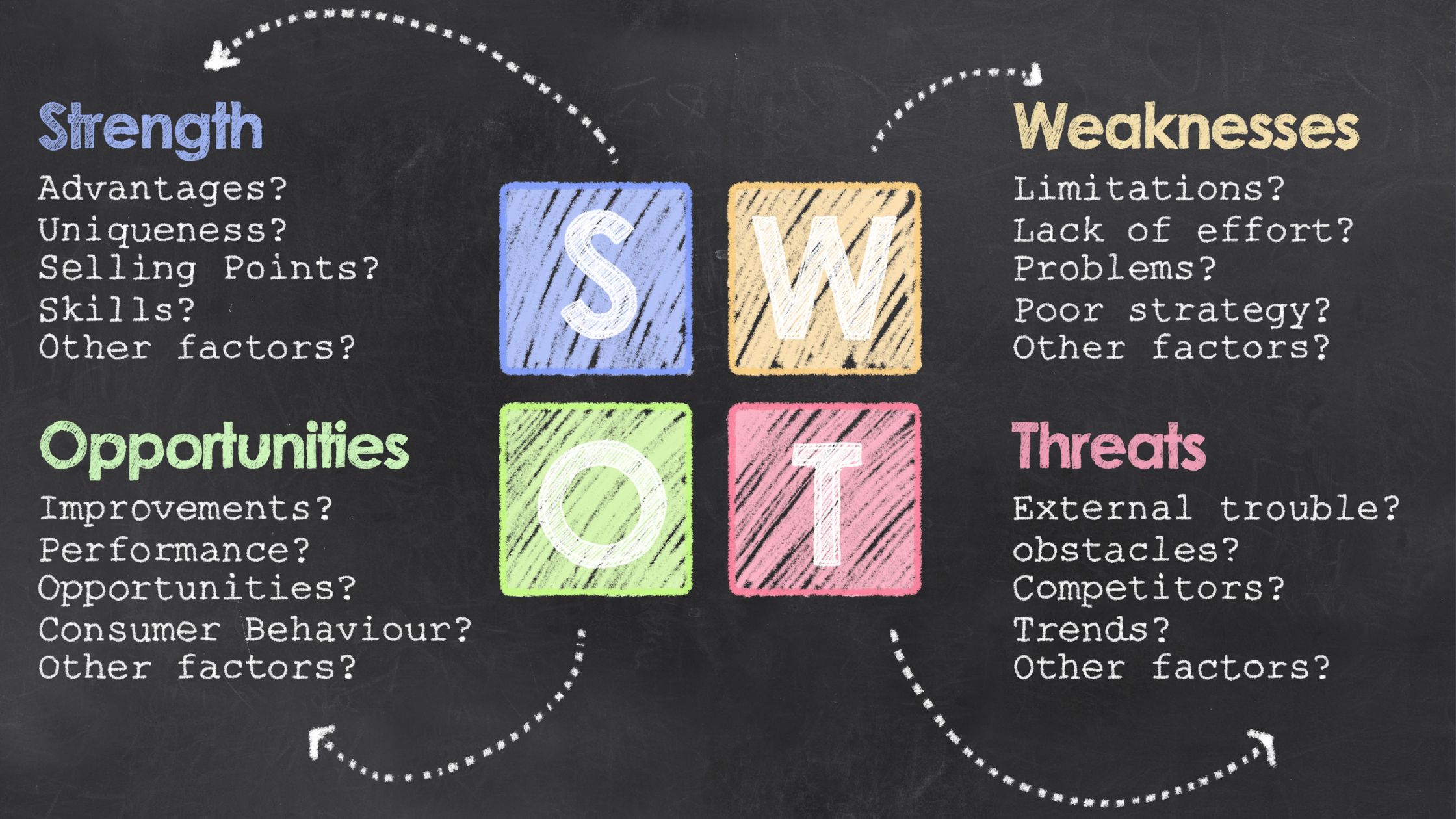Competitor Research and SWOT Analysis: Gaining Insights for Success

In today’s competitive business landscape, understanding your competitors is crucial for success. Conducting competitor research and performing a SWOT analysis can provide valuable insights that inform your business strategy. In this blog post, we will explore the importance of competitor research and how to conduct a SWOT analysis.
Why Conduct Competitor Research?
Competitor research allows you to gain a deeper understanding of your market and the players within it. It provides insights into your competitors’ strengths and weaknesses, their strategies, pricing, marketing tactics, product offerings, and customer perception. Here are a few reasons why conducting competitor research is essential:
Identify Market Opportunities: Analyzing your competitors helps identify gaps in the market that you can exploit. It allows you to identify underserved customer needs or areas where you can provide a unique offering.
Stay Ahead of the Competition: By understanding your competitors’ strategies and staying up to date with their actions, you can stay one step ahead. This knowledge allows you to respond quickly to market changes and develop strategies to outperform your competitors.
Enhance Your Product or Service: Studying competitors’ products or services can help you identify areas for improvement. By analyzing what they do well and where they fall short, you can develop a superior offering that meets customer demands.
Differentiate Your Brand: Understanding your competitors’ positioning and messaging enables you to differentiate your brand effectively. By emphasizing your unique value proposition and addressing unmet customer needs, you can carve out a distinct space in the market.
How to Conduct Competitor Research
Identify Your Competitors: Start by identifying your direct and indirect competitors. Direct competitors offer similar products or services to the same target audience. Indirect competitors may have different offerings but still compete for customers’ budget or attention.
Analyze their Products or Services: Examine your competitors’ offerings in detail. Look at the features, pricing, quality, and performance. Evaluate any unique selling points or competitive advantages they have.
Study their Branding and Messaging: Analyze your competitors’ brand identity, including their logo, website, social media presence, and overall messaging. Understand how they position themselves in the market and appeal to their target audience.
Assess Pricing Strategies: Review your competitors’ pricing structures. Analyze how they position their prices compared to the value they provide. Identify any pricing gaps or opportunities for differentiation.
Evaluate Marketing and Promotion Tactics: Examine your competitors’ marketing and advertising efforts. Look at their online and offline presence, social media campaigns, content marketing, SEO strategies, and any partnerships or sponsorships they engage in.
SWOT Analysis: Assessing Strengths, Weaknesses, Opportunities, and Threats
Once you have gathered competitor research, a SWOT analysis can help you make sense of the data and develop a holistic understanding of your own business in relation to competitors. Here’s how you can conduct a SWOT analysis:
Strengths: Identify your own strengths by assessing what your business does exceptionally well. This could include unique expertise, superior quality, strong customer relationships, or a well-known brand.
Weaknesses: Be honest about your business’s weaknesses, including areas where you may lag behind competitors. It could be a lack of resources, limited market reach, operational inefficiencies, or outdated technology.
Opportunities: Identify external opportunities that you can leverage to your advantage. These could be emerging market trends, gaps your competitors haven’t addressed, partnerships, or new technologies that enhance your offering.
Threats: Recognize the threats you face in the market, including trends, regulations, economic conditions, or rising competition. Understanding these threats helps you take proactive measures to mitigate risks.
By conducting competitor research and performing a SWOT analysis, you gain a comprehensive understanding of the market, your competitors, and your own business. This knowledge empowers you to make informed decisions, differentiate your brand, and develop strategies to successfully navigate the competitive landscape. Remember, knowledge is power, and staying ahead requires continuous monitoring and adaptation to maintain your competitive edge.
Related Resources
The Benefits of Google Ads & How Small Businesses Can Take Advantage
In today's fast-paced digital landscape, businesses need to find effective ways to drive traffic to their websites and generate leads. While organic methods such as search engine optimization (SEO)...
The Basics of SEO: How It Can Help Your Business in the Long Run
In today's digital age, having an online presence is essential for businesses of all sizes. However, simply having a website is not enough to stand out in the vast online marketplace. This is where...
How an Affiliate Program Can Expand Your Small Business’s Reach
In today's highly competitive business landscape, small businesses need effective strategies to stand out and capture their target market's attention. One proven method to achieve this is by...
![]() Phone: (435) 565-1263
Phone: (435) 565-1263
Email: contact@strausstech.com
Enter Email for Tips on How to Increase Profitability



